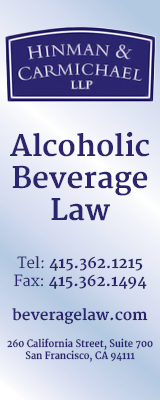FREE! Subscribe to News Fetch, THE daily wine industry briefing - Click Here
![Banner_Xpur_160x600---Wine-Industry-Insight[63]](/wp-content/uploads/Banner_Xpur_160x600-Wine-Industry-Insight63.jpg) |
 ALSO SPONSORED BY: 
Wine Industry Insight |
 |
Winc’s not-so-Netflixy customer retention rate — here’s how the math works
This is the redacted version of the full premium version. The full article and links are available to subscribers of Wine Executive News.
Premium subscribers can log in:
> CCBill < OR > Stripe <
Not a Wine Executive News Subscriber?
Subscribe to Wine Executive News now, and get the rest of this original article along with everything else on the site every day, including original documents, spreadsheets,and source materials for just $29.99 per month or $209 per year
Other articles in this series:
- Winc falls way short of being “The Netflix of Wine” when it comes to customer retention
- Winc raises $3+ million in latest offering, but fails to disclose federal court case brought against it by state of Ohio
- Winc the Netflix of wine? (Nope)
 In our Oct. 20, 2020 issue — Winc the Netflix of wine? (Nope) — we noted that Winc’s income statements and its own explanations indicated that it had a problem with customer retention and its inverse: churn.
In our Oct. 20, 2020 issue — Winc the Netflix of wine? (Nope) — we noted that Winc’s income statements and its own explanations indicated that it had a problem with customer retention and its inverse: churn.
That article explained that, in its investment offering circular, Winc failed to disclose basic information about its purchaser base (demographics, active buyers, etc.), customer retention, active customers, or even the number of total wines it has for sale along with varietals and breakdowns among the various price categories.
In that article. we looked at the value of customer retention and elements that promote it. The article looked at various industry averages (including wine) and contrasted those with Netflix’s 93% customer retention rate and noted that Winc landed far away from its promoted claim of being “The Netflix of Wine.”
We also discovered that, even though Winc has failed to disclose its retention rate and other those financially significant numbers to potential investors, it inadvertently released information that can be used to calculate an estimate.
TWO Key numbers: 715K is the first
Community? Customers? Members?
Instead of disclosing to potential investors any information about its customer base in its offering circular, Winc relies instead on promotional statements in its solicitation emails and investor site that boasts about the “715K” members of its “community.” Winc never clarifies whether “community” encompasses other categories such as potentially interested people other than actual buyers.

750K Community members or 750,000 Customers? Or Members?
In other places outside of its SEC-approved offering circular language, Winc uses the 715K number to include customers:

Unresolved Confusion Among Customer, Community, Member, Subscriber
A text search of Winc’s August 12, 2020 Offering Circular fails to finds the word “community.” The only guidance it offers is the statement:
[Redacted: Premium content.]
Members? Subscribers?
[Redacted: Premium content.]
Winc’s failure to clearly disclose or differentiate among community and customers is confounded by the confused use of subscribers and members — especially the statement that “We do not charge membership fees” right after discussing the Winc member monthly fee.”
An examination of other Winc information supports the credible conclusion that “community,” encompasses the realm of both actual active customers and long-gone zombie buyers. And those two categories are also members.
Second key number: 137K
However, among the garbled confusion of customers, community, members, and subscribers, Winc actually published a useful number: 137K.

[Redacted: Premium content.]
While the “137K New Customer” number does not appear in Winc’s September 25, 2020 SEC filing — Special Financial Report Pursuant To Regulation A – Six Months ended June 30, 2020 Compared to Six Months ended June 30, 2019 — if it is credible, it does offer informati0n useful to estimating the customer base and retention rate”
[Redacted: Premium content.]
Calculating active users from customer orders: 113,599
[Redacted: Premium content.]
Breaking down the 715K number
[Redacted: Premium content.]
How many active users does Winc probably have?
Almost 62,000.
[Redacted: Premium content.]
Retention rate: 65 to 75%. (Possibly 30% According to wine fiinance insiders)
 While we have been using DTC revenues to estimate Winc’s total active users, the actual retention rate may be closer to 30% according to wine industry financial insiders.
While we have been using DTC revenues to estimate Winc’s total active users, the actual retention rate may be closer to 30% according to wine industry financial insiders.
[Redacted: Premium content.]
This is somewhat lower than the 80% average of all winery clubs. However, that should be expected because clubs that are run by wineries include customers who are acquired primarily from among tasting room visitors who were motivated to visit the winery and developed an experiential purchase motivation not possible with a subscription wine service like Winc, Lot18, Penrose Hill and others.
NEXT: Netflix says it has a Billion-dollar algorithm that is vital for customer retention. Is that what Winc needs? Or is even more needed?
Next in this article series: We look at why wine is so complicated that even Netflix couldn’t be the Netflix of wine.




